How to Develop a Customer Excellence Strategy That Works
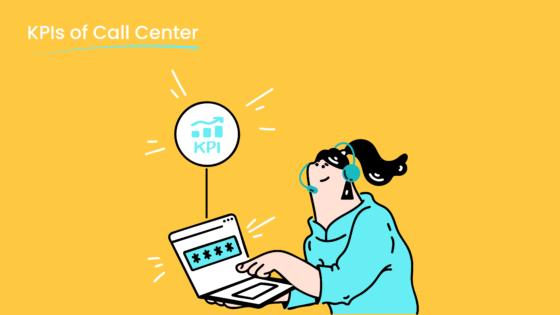
Customer excellence means delivering exceptional experiences that meet or exceed customer expectations. It plays a vital role in driving business success by fostering loyalty and boosting profitability. For instance, loyal customers can be worth up to 10 times their first purchase, and increasing retention rates by just 5% can raise profits by 25-95%. A strong customer excellence strategy ensures sustainable growth by addressing customer needs effectively. Sobot’s solutions, like the Voice/Call Center, empower you to streamline communication, resolve issues efficiently, and build lasting relationships, helping your business achieve excellence in every interaction.
Understanding Customer Excellence Strategy
What is a Customer Excellence Strategy?
A customer excellence strategy focuses on delivering exceptional experiences that meet or exceed customer expectations at every touchpoint. It involves aligning your business processes, tools, and teams to prioritize customer success. This strategy ensures that every interaction contributes to building trust, satisfaction, and loyalty.
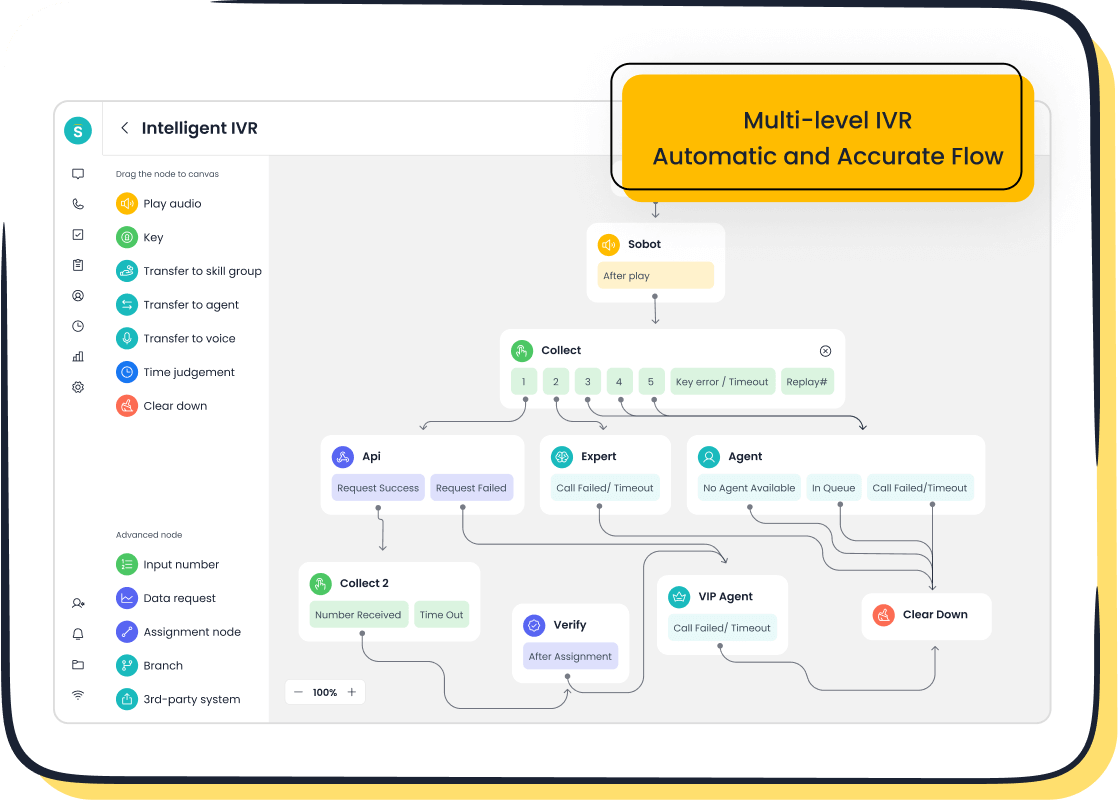
For example, companies that adopt a clear customer experience vision often achieve higher customer satisfaction and retention rates. By understanding customer needs and using tools like Sobot’s Voice/Call Center, you can streamline communication and provide personalized support. This approach not only enhances customer interactions but also drives long-term business growth.
Why is Customer Excellence Crucial for Business Success?
Customer excellence is more than just good service—it’s a competitive advantage. Studies show that 80% of organizations expect to compete primarily based on customer experience. Customers who feel valued are more likely to stay loyal and spend more. For instance, satisfied customers spend 140% more than those with poor experiences. Additionally, a 5% increase in customer retention can boost profits by up to 95%.
Your customer service strategy plays a key role in achieving these outcomes. By leveraging tools like Sobot’s omnichannel solution, you can unify communication channels and provide seamless support. This ensures that every customer interaction is meaningful and contributes to their success.
Key Components of a Successful Customer Excellence Strategy
A successful customer excellence strategy includes several key elements:
- 360° Customer View: Consolidate all customer data into a single platform for easy access. This enables your team to provide personalized and efficient service.
- Lifecycle Management: Deliver consistent experiences across all touchpoints, whether online or offline.
- Experience Health: Monitor customer feedback and take proactive action to address issues.
- Outcomes Health: Track metrics like Customer Satisfaction Score (CSAT) and Net Promoter Score (NPS) to measure success.

Using tools like Sobot’s AI-powered Voice/Call Center can help you implement these components effectively. For example, its intelligent IVR system ensures calls are routed to the right agents, reducing wait times and improving satisfaction. By focusing on these elements, you can create a strategy that not only meets customer expectations but also drives business success.
Assessing Your Current Customer Experience Strategy
Evaluating Existing Customer Experience Processes
To improve your customer experience strategy, you must first evaluate your current processes. Start by analyzing how your team handles customer interactions across various channels. Are your customers receiving timely responses? Are their issues resolved efficiently? Metrics like Customer Satisfaction Score (CSAT), Net Promoter Score (NPS), and First Response Time (FRT) can help you measure the effectiveness of your processes. For example, CSAT provides direct feedback on how satisfied customers are with your service, while NPS gauges their loyalty and likelihood to recommend your business.
Companies like Delta Air Lines have successfully used these metrics to enhance their customer experience. By improving in-flight services, Delta achieved a 15% increase in customer satisfaction and a 10-point jump in NPS, which contributed to a 7% rise in annual revenue. Tools like Sobot’s Voice/Call Center can help you track these metrics in real time, ensuring your team stays on top of customer needs.
Identifying Gaps in Customer Satisfaction
Identifying gaps in customer satisfaction requires a data-driven approach. Quantitative benchmarking, trend analysis, and surveys are effective methods. For instance:
| Approach | Description |
|---|---|
| Quantitative Benchmarking | Compare your performance metrics against industry standards to find areas for improvement. |
| Trend Analysis | Examine historical data to uncover patterns and predict future changes. |
| Surveys | Collect feedback directly from customers to understand their satisfaction levels and pain points. |
Online surveys are particularly efficient, while phone outreach can provide deeper insights from high-value customers. CVS Health used these methods to optimize its pharmacy operations, improving customer satisfaction metrics by 20%. This led to a 10% increase in retention and a 5% rise in revenue from repeat customers. Sobot’s omnichannel solution simplifies survey distribution and data collection, helping you identify and address these gaps effectively.
Aligning Customer Experience Values with Business Goals
Aligning your customer experience values with business goals ensures that every interaction contributes to your success. Start by linking customer experience objectives to measurable outcomes. For example:
| Strategy | Business Goal |
|---|---|
| Link CX Objectives to Revenue | Increase average order value (AOV) |
| Focus on Retention | Reduce churn |
| Enhance Brand Loyalty | Improve NPS and encourage repeat business |
Tracking metrics like Customer Lifetime Value (CLV) can demonstrate how customer experience investments drive profitability. Nordstrom, for instance, implemented a CX KPI framework focusing on First Contact Resolution (FCR) and Customer Effort Score (CES). This approach led to a 12% improvement in CX KPIs and a 5% increase in sales per customer. Sobot’s AI-powered tools, such as its Voice/Call Center, can help you align your strategy by providing actionable insights and streamlining operations.
Identifying and Addressing Customer Needs
Conducting Comprehensive Customer Research
Understanding your customers begins with thorough research. Surveys remain one of the most effective tools for gathering insights. You can use cross-sectional surveys to compare customer preferences at a single point in time or longitudinal surveys to track changes over time. Methods like correlational research help you identify relationships between variables, such as how product features impact satisfaction.
To maximize response rates, consider diverse distribution methods:
- Email surveys leverage brand familiarity.
- Embedding surveys on your website captures feedback from engaged users.
- Social media distribution broadens your reach.
Analyzing product usage data also reveals how customers interact with your offerings. For example, Sobot’s Voice/Call Center provides real-time analytics, helping you identify trends and improve service delivery. By combining these techniques, you can uncover actionable insights to refine your customer experience strategy.
Defining Customer Personas for Tailored Experiences
Customer personas allow you to design experiences that resonate with your audience. These personas represent your ideal customers, based on data like demographics, behaviors, and preferences. Creating detailed personas leads to:
- Improved targeted marketing, increasing engagement and conversions.
- Enhanced product development, ensuring your offerings meet customer expectations.
- Data-driven decision-making, reducing risks and boosting success.
For instance, if your persona includes tech-savvy professionals, you might prioritize features like AI-powered tools. Sobot’s omnichannel solution, with its unified workspace and automation capabilities, aligns perfectly with such needs. Tailoring your approach based on personas ensures every interaction feels personalized and meaningful.
Mapping the Customer Journey to Identify Pain Points
Mapping the customer journey helps you visualize how customers interact with your brand. This process highlights pain points and opportunities for improvement. Tools like customer feedback platforms and visualization software simplify this task. For example:
| Tool Type | Purpose | Example Use Case |
|---|---|---|
| Customer Feedback Platforms | Collect real-time responses from users to identify pain points | Highlighting areas for enhancement through direct user insights |
| Visualization Tools | Create clear user journey maps to visualize user interactions | Mapping pathways users take while interacting with your services |
| Collaboration Tools | Ensure stakeholder access and contribution to the mapping process | Fostering a shared understanding of user experiences among team members |

Sobot’s solutions, such as its Voice/Call Center, provide data analytics and call tracking, enabling you to pinpoint friction points in real-time. By addressing these issues, you can enhance the overall customer experience and build stronger relationships.
Building a Customer-Centric Culture
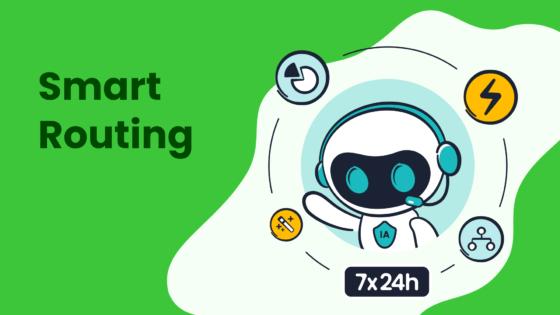
Creating a customer-centric culture is essential for delivering excellent customer service and achieving customer success. Businesses that prioritize customer needs foster loyalty, trust, and long-term growth. A study by Deloitte and Touche revealed that companies with customer-centric strategies are 60% more profitable than those without. Amazon exemplifies this approach by consistently prioritizing customer needs, resulting in market dominance and enhanced loyalty.
Empowering Teams to Prioritize Customer Needs
Empowering your team to focus on customer needs leads to measurable improvements in customer service quality. Engaged employees are more likely to deliver a positive customer service experience, which enhances loyalty and advocacy. Consider these benefits:
- Empowered employees improve customer satisfaction scores.
- Engaged teams create stronger customer relationships.
- Prioritizing customer needs boosts overall customer service experience.
Sobot’s Voice/Call Center equips your team with tools like intelligent IVR and real-time analytics, enabling them to address customer concerns efficiently. By providing the right resources, you empower your team to deliver excellent customer service consistently.
Training Employees for Excellence in Customer Service
Training is a cornerstone of any effective customer service strategy. A Salesforce study found that 80% of customers value their experience with a company as much as its products. Companies that invest in training see employees who are 83% more likely to report job satisfaction, which reduces turnover and increases engagement. For example, if a business invests $45,000 in training and gains $100,000 in net profit, the ROI is 122%. This demonstrates how training enhances customer service quality and drives profitability.
Sobot’s solutions, such as its omnichannel platform, simplify training by providing a unified workspace for managing customer interactions. This ensures your team can deliver a seamless and positive customer service experience across all channels.
Aligning Leadership with Customer-Centric Goals
Leadership alignment is critical for embedding customer-centric values into your organization. Leaders must integrate customer outcomes with corporate objectives to ensure operational success. For example:
| Key Insight | Explanation |
|---|---|
| Importance of Alignment | Aligning customer outcomes with business goals drives operational success. |
| Symbiotic Relationship | Customer success directly contributes to business growth. |
| Customer-Centric Model | A customer-focused model fosters long-term value and loyalty. |
Sobot’s AI-powered tools provide actionable insights, helping leaders track customer service metrics like CSAT and NPS. This alignment ensures every decision supports customer success, enhancing overall customer service strategy.
Leveraging Technology to Enhance Customer Experience
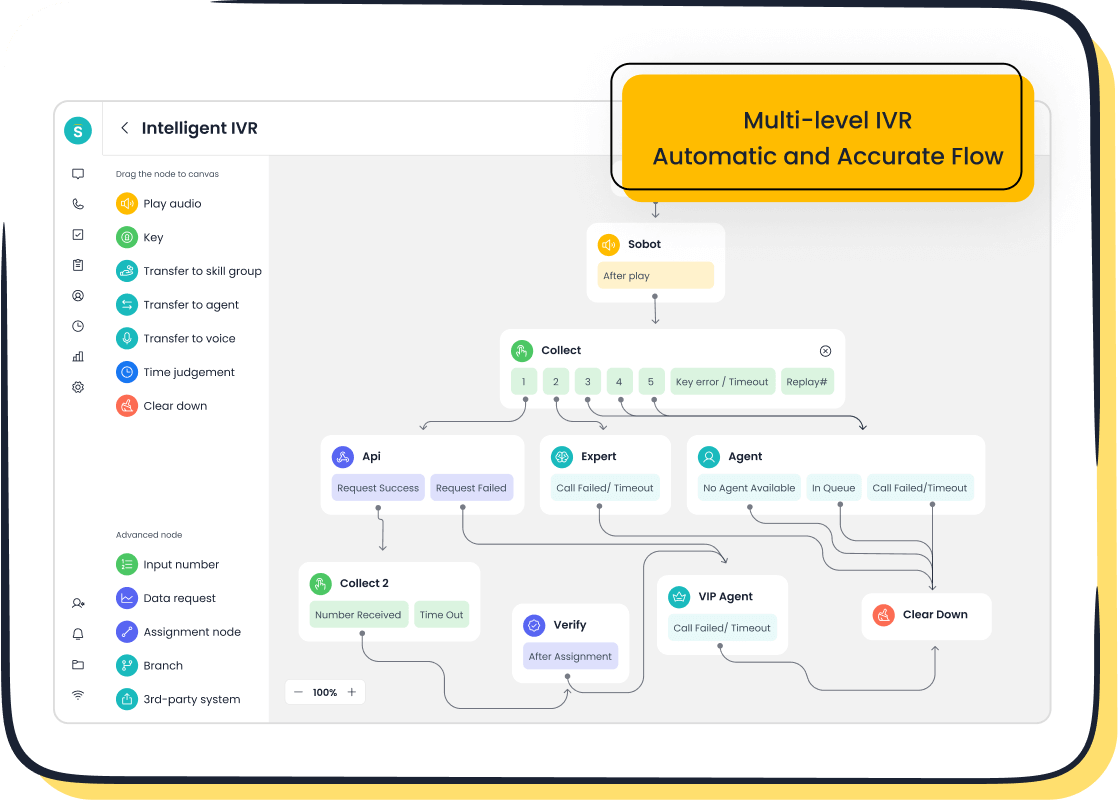
How Sobot’s Voice/Call Center Improves Customer Interactions

Technology plays a pivotal role in enhancing your customer experience strategy. Sobot’s Voice/Call Center exemplifies this by streamlining communication and improving efficiency. Businesses that adopt this solution report significant improvements, such as an 80% reduction in response time and a 20% boost in agent efficiency. Samsung, for instance, achieved a 97% customer satisfaction rate and a 30% increase in agent productivity after integrating Sobot’s platform.
The Voice/Call Center offers features like intelligent IVR, which routes calls to the right agents, reducing wait times. Its AI-powered Voicebot personalizes interactions by recognizing customer intent, ensuring a seamless experience. Additionally, real-time analytics provide actionable insights, enabling your team to address issues proactively. These capabilities not only enhance customer interactions but also foster loyalty and trust.
Using AI and Automation for Personalized Experiences
AI and automation are transforming how you deliver a personalized customer experience. Tools like Sobot’s omnichannel solution leverage AI to handle repetitive tasks, freeing agents to focus on complex issues. This ensures faster resolutions and more meaningful interactions. For example, AI-driven chatbots can answer FAQs instantly, while automation streamlines workflows, reducing errors and delays.
Industry reports highlight the impact of digital solutions on customer experience. Companies with advanced digital transformation strategies report 45% revenue growth. Gartner analysts emphasize that aligning technology with customer needs respects their time and builds trust. By integrating AI and automation, you can create tailored experiences that resonate with your audience, driving satisfaction and retention.
Integrating CRM Tools for Seamless Customer Management
CRM integration is essential for delivering a cohesive customer experience. A well-integrated CRM provides a unified view of customer data, enabling your team to respond quickly and accurately. This minimizes data silos and fosters collaboration across departments. Insights from CRM systems allow you to tailor sales pitches and improve engagement.
Sobot’s Voice/Call Center seamlessly integrates with existing CRM tools, ensuring informed and meaningful interactions. This integration streamlines operations, enhances customer insights, and boosts support efficiency. Businesses that adopt CRM integration often see increased revenue and customer satisfaction. By leveraging these tools, you can align your operations with customer needs, creating a seamless and efficient experience.
Collecting and Acting on Customer Feedback
Effective Methods for Gathering Customer Feedback
Gathering customer feedback is essential for understanding their needs and improving your services. Companies that adopt structured feedback mechanisms are 2.2 times more likely to outperform competitors. To achieve this, you can use various methods:
- Surveys: Online surveys are quick and efficient for collecting feedback. Tools like Sobot’s omnichannel solution simplify survey distribution across multiple channels.
- Social Media Monitoring: Platforms like Twitter and Facebook provide real-time insights into customer sentiments.
- In-Person Interactions: Face-to-face feedback during events or store visits offers deeper insights.
For example, Walmart leveraged comparative analysis to transform its e-commerce operations, resulting in a 79% growth in sales. By combining these methods, you can establish a feedback loop that fosters continuous improvement.
Analyzing Feedback to Drive Improvements
Analyzing customer feedback helps you identify trends and areas for enhancement. Metrics like Net Promoter Score (NPS) and Customer Satisfaction (CSAT) provide measurable insights into service quality. For instance:
| Key Component | Description |
|---|---|
| Sentiment Analysis | Classifies feedback as positive, negative, or neutral. |
| Topic Modeling | Groups feedback into categories to identify common issues. |
| Quantitative Analysis | Tracks numerical data like satisfaction scores to monitor trends. |
| Root Cause Analysis | Pinpoints the underlying causes of recurring problems. |
Sobot’s Voice/Call Center offers real-time analytics, enabling you to track these metrics and uncover actionable insights. By addressing identified gaps, you can enhance customer satisfaction and loyalty.
Implementing Changes Based on Customer Insights
Acting on customer feedback demonstrates your commitment to their needs. A retail giant, for example, used data analytics to personalize shopping experiences, leading to increased sales and loyalty. Here’s how you can implement changes effectively:
- Prioritize Issues: Focus on feedback with the highest impact on customer satisfaction.
- Collaborate Across Teams: Ensure all departments work together to address feedback-driven insights.
- Communicate Changes: Inform customers about improvements made based on their feedback.
Sobot’s solutions, such as its omnichannel platform, streamline collaboration and communication, ensuring seamless implementation of changes. By continuously refining your approach, you can build stronger relationships and drive long-term success.
Measuring and Continuously Improving Your Strategy
Key Performance Indicators (KPIs) for Customer Excellence
Tracking the right KPIs ensures you can measure the success of your customer service strategy effectively. These indicators provide actionable insights into how well your business meets customer expectations and identifies areas for improvement. Here are some essential KPIs to monitor:
| KPI Name | Description |
|---|---|
| Customer Satisfaction Score (CSAT) | Measures customer happiness with specific interactions or overall experience. |
| Average Customer Effort Score (CES) | Assesses how easy it is for customers to interact with the business and resolve issues. |
| First Contact Resolution Rate (FCR) | Indicates the percentage of inquiries resolved during the first interaction without escalation. |
| Customer Churn Rate | Tracks the percentage of customers who stop doing business over a specific period, indicating retention. |
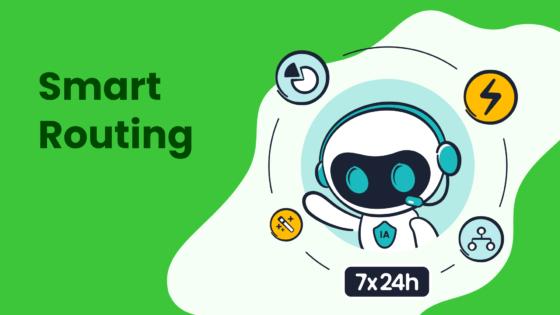
For example, Sobot’s Voice/Call Center helps you improve FCR by routing calls intelligently, ensuring customers get the right support on their first attempt. This not only enhances customer success but also reduces operational costs.
Monitoring Customer Satisfaction and Retention Rates
Monitoring customer satisfaction levels and retention rates is critical for sustaining long-term success. High satisfaction levels often lead to better retention, which directly impacts profitability. Industry benchmarks reveal that SaaS companies aim for retention rates of 90% or higher, while retail businesses target 60-70%.
| Industry | Customer Retention Rate |
|---|---|
| SaaS | 90% or higher |
| Retail | 60-70% |
Using tools like Sobot’s omnichannel solution, you can track these metrics in real time. For instance, its unified workspace consolidates customer data, enabling your team to deliver personalized experiences that boost satisfaction. By analyzing trends in retention and satisfaction, you can identify patterns and address pain points proactively.
Adopting a Continuous Improvement Approach
A continuous improvement approach ensures your customer service strategy evolves with changing customer needs. This involves fostering a culture where employees actively seek ways to enhance processes and innovate. Engaging your team in this process builds ownership and commitment, which are essential for customer success.
Consider adopting methodologies like Lean or Six Sigma to streamline operations and improve efficiency. Agile practices also allow you to respond quickly to market changes, ensuring your strategy remains relevant. Sobot’s AI-powered tools, such as its Voice/Call Center, accelerate these efforts by providing real-time analytics and automation. This empowers your team to make data-driven decisions that enhance customer satisfaction levels and retention rates.
Tip: Leverage technology to support continuous improvement. For example, Sobot’s solutions integrate seamlessly with CRM systems, enabling you to track KPIs and refine your strategy over time.
Developing a customer excellence strategy involves understanding customer needs, building a customer-centric culture, leveraging technology, and continuously improving processes. Consistency ensures every interaction meets expectations, while adaptability allows you to respond to changing demands. Technology, like Sobot’s Voice/Call Center, streamlines communication and enhances efficiency.
Success stories highlight the impact of robust strategies. Coca-Cola’s Playable Ad achieved over 21% new customer redemptions, and Zoe Financial’s data-driven approach led to 60% of sales from top clients. Similarly, Sobot’s solutions empower businesses to deliver exceptional experiences, driving loyalty and growth. Explore how Sobot can transform your customer experience strategy today.
FAQ
What is the role of technology in customer excellence?
Technology simplifies customer interactions and enhances service quality. Tools like Sobot’s Voice/Call Center streamline communication with features like intelligent IVR and real-time analytics. For example, businesses using AI-powered solutions report a 20% boost in efficiency and faster issue resolution, improving customer satisfaction significantly.
How can Sobot’s solutions help improve customer retention?
Sobot’s solutions, such as its omnichannel platform, unify communication channels and provide personalized experiences. By addressing customer needs efficiently, businesses can reduce churn. For instance, Samsung achieved a 97% satisfaction rate and a 30% increase in agent productivity after implementing Sobot’s tools.
Why is customer feedback important for strategy improvement?
Customer feedback reveals pain points and improvement areas. Companies using structured feedback mechanisms outperform competitors by 2.2 times. Sobot’s Voice/Call Center offers real-time analytics, helping you analyze feedback and implement changes that enhance satisfaction and loyalty.
How does Sobot ensure seamless integration with existing systems?
Sobot’s solutions integrate effortlessly with CRM tools like Salesforce. This ensures a unified view of customer data, enabling faster and more accurate responses. Businesses benefit from streamlined operations and improved customer insights, driving better engagement and retention.
What industries benefit most from Sobot’s solutions?
Sobot serves diverse industries, including retail, finance, and education. For example, gaming companies use Sobot’s AI-driven tools to resolve player issues efficiently. Retailers leverage omnichannel solutions to provide seamless support, boosting customer satisfaction and loyalty.
See Also
Essential Strategies for Effective Call Center Quality Management
Comprehensive Overview of Call Center Quality Management Systems
Ten Strategies to Enhance Live Chat Customer Experience
Navigating the Best Software for Call Center Quality Assurance
